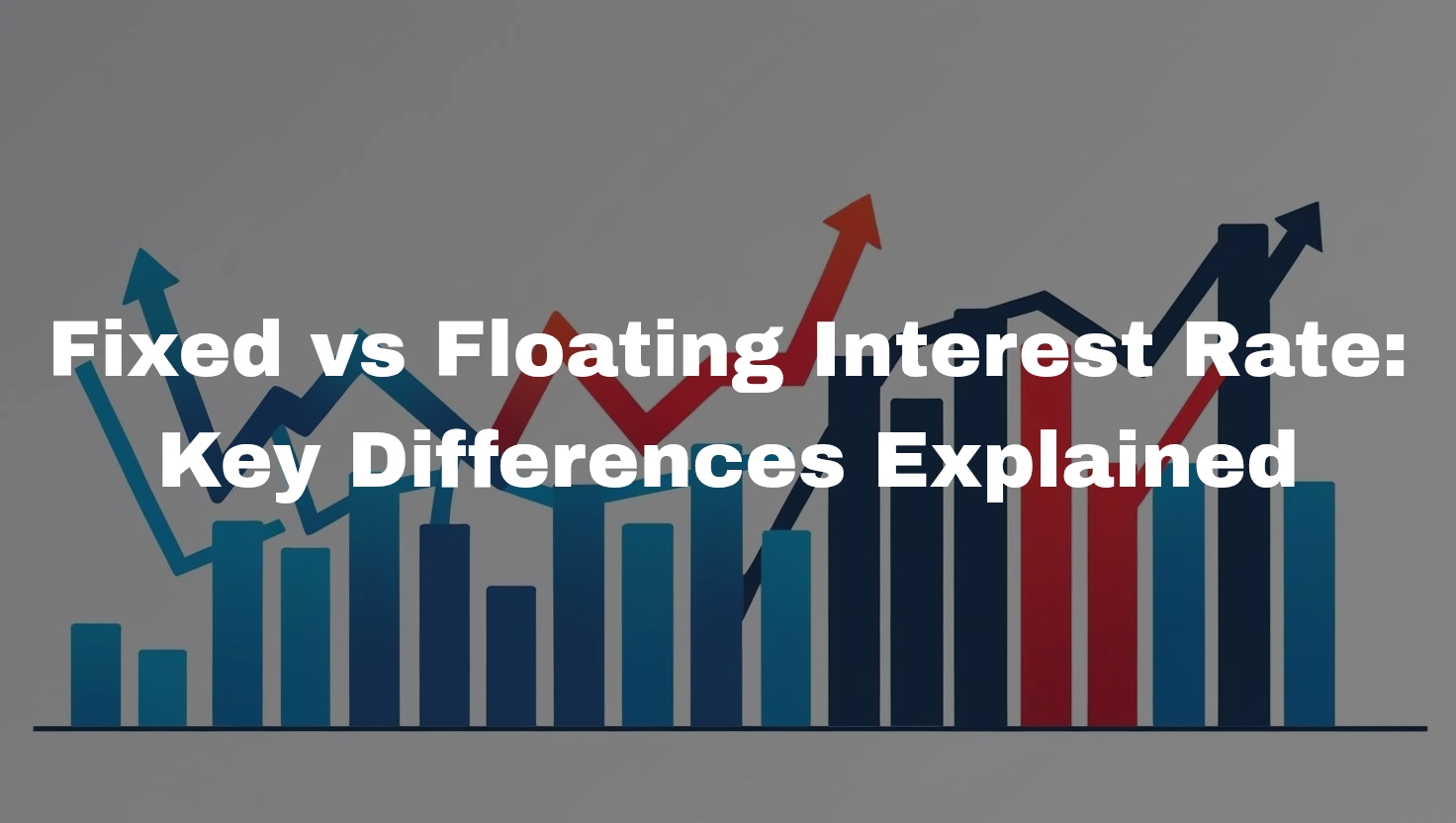
Fixed vs Floating Interest Rate: Key Differences Explained
Interest rates play a pivotal role in financial planning, particularly when considering loans or mortgages. The decision to choose between a fixed or floating interest rate can significantly impact your long-term financial obligations. Understanding the differences is crucial for homebuyers, investors, and developers in Gujarat’s dynamic real estate market, where loan-funded investments are common.
This article explores the core concepts of fixed and floating interest rates, explains their key differences, discusses their relevance to Gujarat’s real estate and financial markets, and answers common questions.
Understanding the Basics
What is a Fixed Interest Rate?
A fixed interest rate remains constant throughout the loan tenure, regardless of market fluctuations. Whether interest rates rise or fall in the economy, your EMI (Equated Monthly Installment) remains unchanged.
Example: If you take a ?30 lakh home loan at a fixed interest rate of 9% for 20 years, your EMI will remain the same even if market rates rise to 10% or drop to 7%.
What is a Floating Interest Rate?
A floating interest rate (also called variable or adjustable rate) changes periodically based on the market benchmark rates such as the RBI repo rate or MCLR (Marginal Cost of Lending Rate). This means your EMI may increase or decrease depending on market movements.
Example: If you take the same ?30 lakh loan at a floating rate, your interest rate might initially be 9%, but can change to 8.5% or 9.5% during the tenure.
Key Differences: Fixed vs Floating Interest Rate
|
Feature |
Fixed Interest Rate |
Floating Interest Rate |
|
Stability |
EMI remains constant |
EMI varies as rates change |
|
Market Linkage |
Not linked to market rates |
Directly influenced by benchmark rates |
|
Risk |
Low risk |
Higher risk due to rate fluctuations |
|
Cost |
Usually slightly higher (0.25%-1%) |
Usually lower at the start |
|
Prepayment Charges |
May apply |
Usually waived (for individuals) |
|
Best for |
Risk-averse borrowers |
Borrowers expecting falling/stable rates |
|
Flexibility |
Low |
High |
|
Transparency |
High |
Can vary based on lender's terms |
|
Popularity in Gujarat |
Popular among salaried borrowers |
Common among developers, NRIs, and investors |
Why It Matters: Relevance to Gujarat
Gujarat has seen rapid urban growth in cities like Ahmedabad, Surat, Rajkot, and Vadodara. With rising home purchases, real estate investments, and infrastructural developments, many rely on loans.
-
Fixed interest loans are preferred by salaried individuals and first-time buyers in Gujarat's Tier-I cities for budget predictability.
-
Floating interest loans are often chosen by developers, business owners, or high-net-worth individuals who can absorb fluctuations or expect rates to drop.
Financial institutions in Gujarat, like Gujarat State Co-operative Bank, HDFC, ICICI, and SBI, offer both types of interest structures with localized schemes.
Importance of Choosing the Right Option
-
Long-Term Planning: Fixed rates help in fixed-budget planning, while floating rates suit those who can adapt to income changes.
-
Cost Efficiency: Floating rates may lead to lower overall costs if interest rates fall.
-
Risk Management: Choosing the wrong type can lead to financial stress, especially during market volatility.
-
Project Feasibility (Real Estate): Developers in Gujarat factor in floating rates when calculating ROI and margins.
-
NRI Investment Trends: With significant NRI investments in Gujarat, interest rate type impacts cross-border financial planning.
Real Estate Context: Examples from Gujarat
-
Ahmedabad: First-time homebuyers prefer fixed rates due to budget constraints and stable EMI expectations.
-
Surat: Investors often pick floating rates, expecting market corrections and RBI easing policies.
-
Rajkot & Vadodara: Developers opt for floating to benefit from rate cycles and keep EMIs low during project development.
Pros and Cons Summary
Fixed Rate:
Pros:
-
Predictability
-
No impact from rate hikes
-
Good for long-term loans
Cons:
-
Higher initial rate
-
Less flexibility
-
Prepayment charges are possible
Floating Rate:
Pros:
-
Lower starting rate
-
Flexible and responsive to the market
-
No prepayment charges
Cons:
-
Unpredictable EMIs
-
Complex to budget
-
Risk during inflation or a tight monetary policy
Winding Up Note
Choosing between a fixed and floating interest rate is not just a financial decision—it’s a strategic one. In Gujarat’s evolving real estate and financial ecosystem, understanding your personal and business needs is key to making the right choice. With major cities witnessing rapid development and increased NRI interest, borrowers must remain aware of their options and market dynamics.
Banks and NBFCs in Gujarat offer competitive loan products catering to both interest structures. By aligning your choice with your risk profile, cash flow, and market outlook, you can optimize your borrowing experience—whether for a new home, a commercial venture, or a real estate project.
In case of any query regarding Fixed vs Floating Interest Rate: Key Differences Explained, feel free to connect with our legal experts, Tulja Legal, at +91 96380-69905
About the Author
Anju S Nair
Legal Researcher | LLB, MA English| Corporate Lawyer | Business Enthusiast | Founder & CEO at iLawbook.
References
-
Reserve Bank of India (RBI) – https://www.rbi.org.in
-
National Housing Bank (NHB) – https://www.nhb.org.in
-
State Bank of India (SBI) – https://www.sbi.co.in
-
HDFC Bank – https://www.hdfcbank.com
-
ICICI Bank Home Loans – https://www.icicibank.com
-
Gujarat Real Estate Regulatory Authority (GUJRERA) – https://gujrera.gujarat.gov.in
-
Economic Times Realty – https://realty.economictimes.indiatimes.com
-
Moneycontrol - Personal Finance – https://www.moneycontrol.com/personal-finance
-
Times of India – Ahmedabad Edition (Real Estate News)
-
LiveMint – Housing Finance Trends in India – https://www.livemint.com
